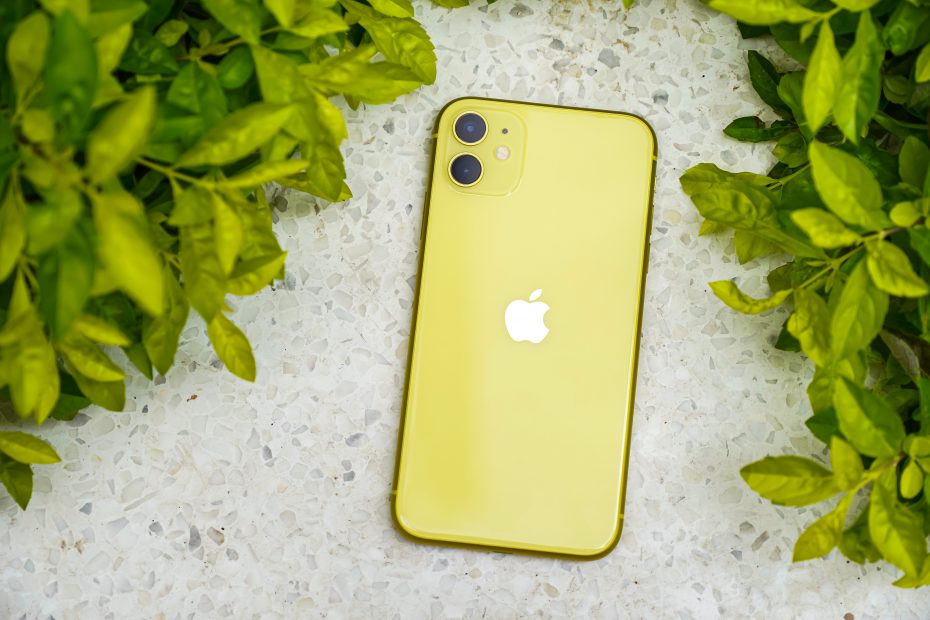What do you do with an old device?
Some people give it away as a hand-me-down. Some stash it into their drawers. Some toss it straight into the bin.
Out of sight, out of mind? What really happens to your once-beloved gadgets in the end?
In 2019, the Global E-Waste Monitor found that we produced 53.6 million metric tons worth of electronic waste worldwide – that’s equivalent to 5,800 Eiffel Towers. And yes, your devices are in that pile too.
Let’s look at why e-waste is becoming a bigger problem each year. We’ll also talk about how recycling helps manage unwanted devices, and actions we can take to reduce our personal e-waste.
Table of Contents
What is E-Waste?
E-waste refers to the electronic products that we throw away, or no longer use. Television sets, smartphones, home appliances, office computers … Every old tech item that was ever replaced becomes electronic waste.
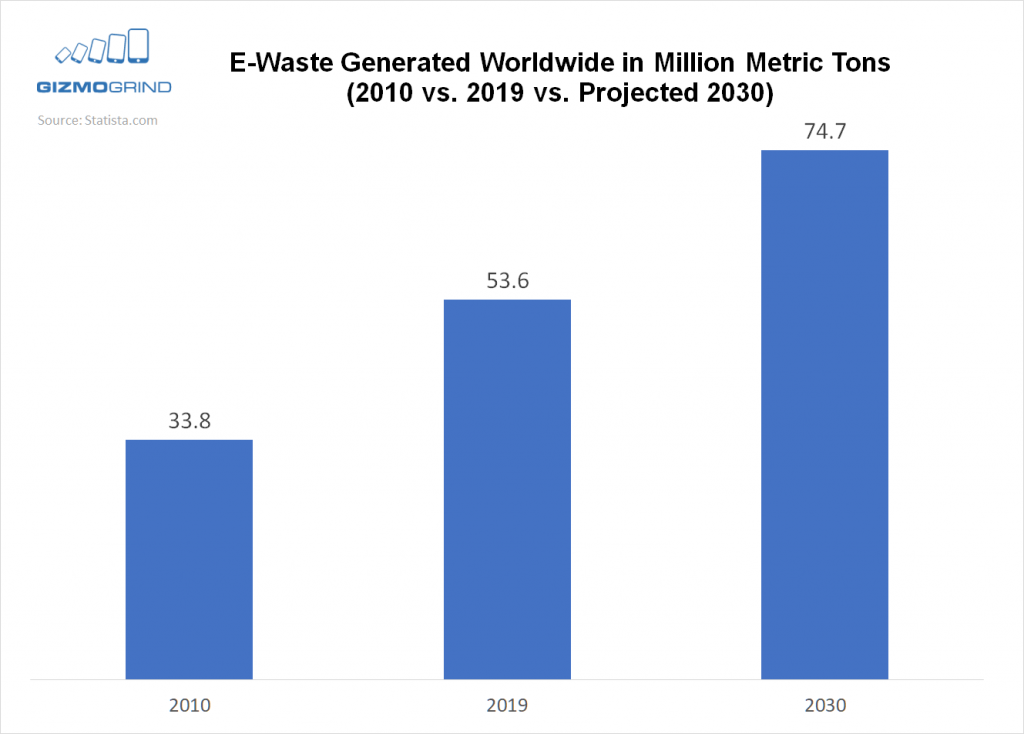
How have we gotten ourselves into so much e-waste?
Why E-Waste Is Increasing

Consumer Culture
Let’s reflect on our society as a whole.
The 1950s ushered in the dawn of “Throwaway Living”. The boom of disposables began as human convenience took importance over environmental damage.
30 years later, we went through the 80s – the iconic decade of materialism. “Shop Till You Drop!” was the phrase. Buying new things was fun – and a way of life.
These two moments in time essentially evolved into our consumer culture today. We want greater, newer, sooner. Expensive price tags aren’t a big obstacle.
For example: the smartphone. We have a variety of mobile package deals from carriers and zero-interest installment plans. It’s temptingly easy to step into the bright store and step out with a new device.
We can try to be economical and consider our carbon footprint. But that’s where those spiffy advertisements, using all that we know of human psychology, will convince us otherwise.
By nature, humans look for novel experiences. Yet the excitement of owning something new wears off quickly. Our tech lifestyle has unfortunately become a fast-moving conveyor belt of “Buy, Use, Discard, Replace.”
Planned Obsolescence

There’s another reason why we buy more: things don’t seem to last as long as do before.
Wonder why many smartphones start slowing down after 2 years or so? Planned obsolescence is the reason.
This started in the 1920s. Light bulbs used to last 2,500 hours until a cartel involving companies like Philips and General Electric modified the bulbs, so that their lifespans were cut by half.
This forced customers to buy the products more frequently, thus profiting the companies.
The business tactic persists until today. Like an open secret. And consumer culture encourages it. Replacing old things with new ones – as long as we like and can afford them – is the accepted norm.
But throwing away so much – what happens then?
The Harmful Impact of E-Waste

The majority of electronic waste ends up in landfills and incinerators.
In landfills, toxic chemicals such as lead, mercury and cadmium eventually seep back into soil and groundwater.
Absorbed by plants and consumed by animals, these invisible components find their way back into the food on our plates.
For incinerated e-waste, the burning process releases the same mixture of cancerous chemicals into the air we breathe.
Most of us may not feel the impact immediately because it all happens far, far away from our homes.
But let’s picture the Earth as a gigantic glass dome. These hazardous substances are constantly rising within the limited space we live in.
The problem is not that far away as we like to imagine.
The E-Waste Recycling Process
The eco-friendly way of managing our old gadgets would involve stripping them down to their elements so their materials can be used again. Recycling (also called urban mining) recovers materials both rare (e.g. gold, silver) and common (e.g. iron).
Let’s use smartphones as our example to see what goes on in the recycling process.
Stage 1: Collection of E-Waste
First, old devices are collected, usually indirectly through:
- Trade-in services by businesses
- Drop-off events by charities
The accumulated gadgets are then sent to recycling centers.
Stage 2: Sorting, Dismantling, And More Sorting
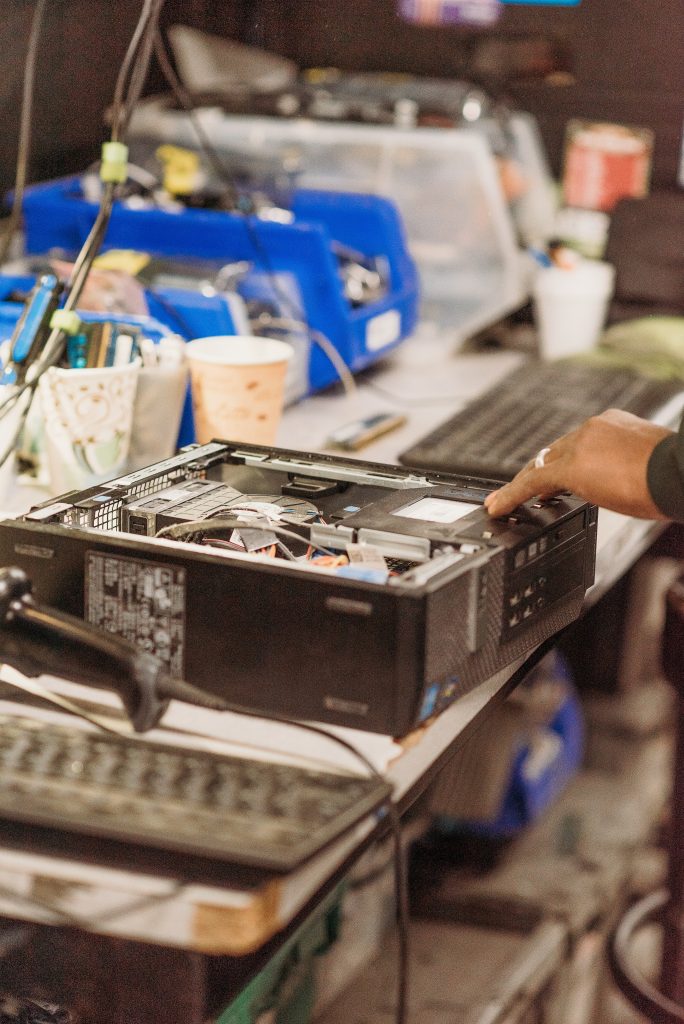
Usable phones are tested, sorted out and shipped off to be refurbished and sold. Damaged ones are then manually dismantled by recycling employees.
Here, valuable but hazardous parts like lithium-ion batteries are carefully removed. Otherwise, they can explode into flames if fed directly into crushing machines.
After the safely dismantled devices are mechanically shredded into small pieces, the components are further organized by material: plastics, glass, as well as high and low grades of metal.
Plastics, for example, may be sorted on conveyor belts by hand. Ferrous (i.e. iron-containing) metals can be separated using magnets.
Stage 3: Material Recovery
Finally, the sorted pieces are sent to smelters to extract their pure elements. Aluminum-rich components head to aluminum smelters; ferrous metals go to steel smelters to recover iron, and so on.
Once the raw materials are obtained, they are sold to tech manufacturers and used to make new devices again.
Why Recycling Isn’t Fully Solving E-Waste Yet
If we’re already recycling, why is the e-waste problem still such a challenging issue?
The IVL Environmental Research Institute found that our average recycling rate is only around 35%. That rate has also stayed stagnant since 2009.
What causes low recycling rates?
High Costs
By nature, electronic products are complex. Sorting and dismantling devices of different shapes and sizes rely heavily on human work.
To get the most yield, recyclers tend to focus on materials like copper and aluminum first. For parts that produce little yield or are too costly to dismantle – they are unfortunately sent to incinerators and landfills as well.
Limited Recycling Technology
Recycling centers don’t have the ability to recycle every type of e-waste.
For example, phone batteries need to go to specific battery recycling plants – but there are only 4 such factories worldwide. SungEel HiTech, based in South Korea, is one of them. The company takes in phone batteries from 8 countries already.
Therefore, if a local recycling center lacks (1) in-house tech and (2) downstream partners to process certain components, the precious materials in those parts simply can’t be recovered.
Tech production today exceeds our current resources to dispose of them properly. Our system is facing a global bottleneck in how e-waste is managed.
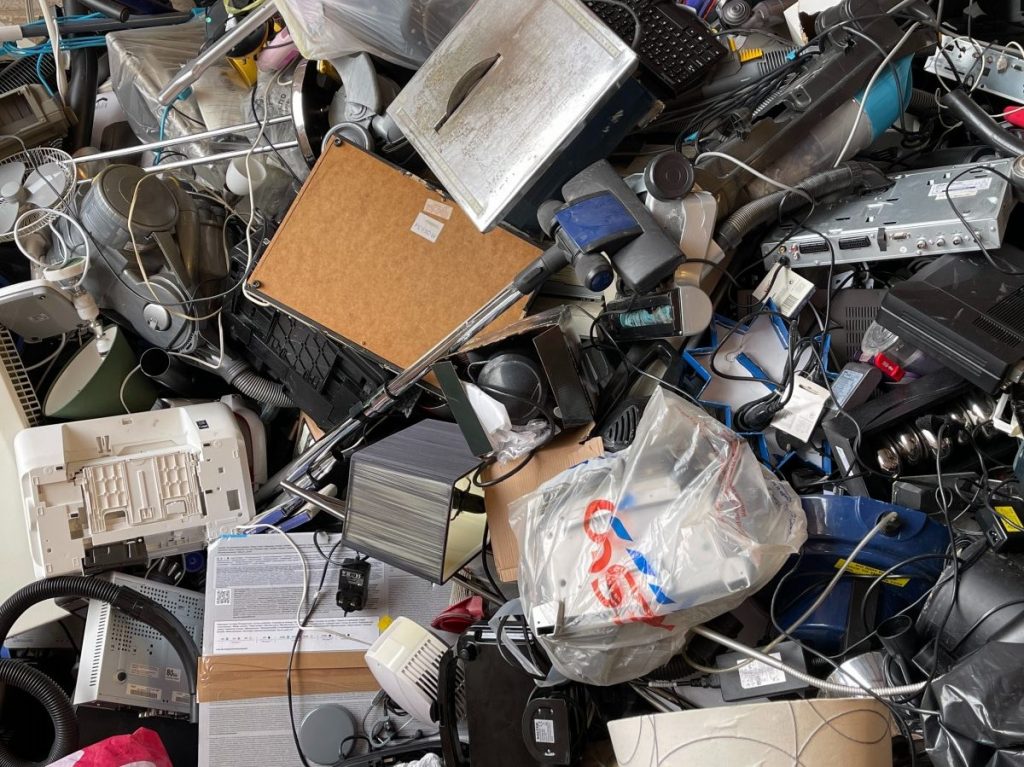
How to Reduce Our Personal E-Waste
There’s no denying that our purchases are a big part of the problem, too.
As passionate tech consumers, let’s take responsibility for the devices we own and love by going back to the basics: reduce, reuse and recycle.
Reduce
Cherishing Your Device

Let’s step back from the “Buy and Replace” habit. Fancy ads may tell us otherwise … But other than feeding our ego (and the company’s sales), we don’t need a new device so soon.
Holding on to our small phones a few years longer has a bigger impact than you think.
Let’s look at the numbers. The iPhone 6 series was and still is the bestselling smartphone of all time – selling more than 200 million units worldwide.
Cherishing this model alone for more than 2 years can save up to 31,500 tons of e-waste in that time – that’s the weight of 3 Eiffel Towers already.
Repair & Upgrade
We can further extend the lifespan of our gadgets by repairing them or upgrading them whenever possible.
Broken screen? It can be fixed from as low as $129. Want to up your smartphone photography game? Check out add-on camera lenses.
Reuse
Buy Refurbished Phones
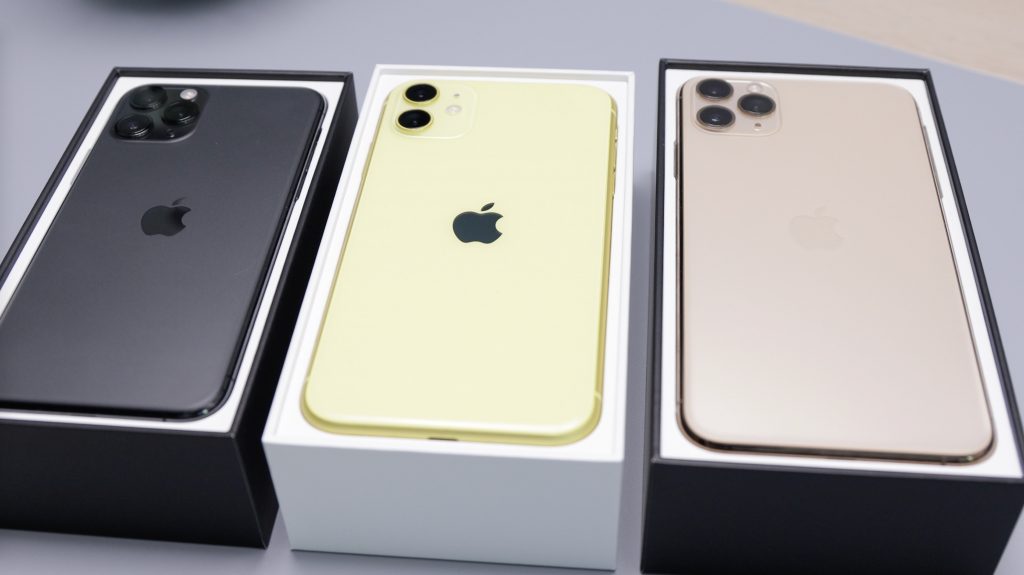
Refurbished phones may have been used, but their lifespans are far from over.
Those that come from smartphone manufacturers themselves, like Apple, have the same one-year warranty.
Packaged in a clean box, they’re as good as new. The biggest plus point is paying less!
Sell, Give or Donate to Someone Else
Our old gadgets can also be reused when we find a new owner for them. We can sell it secondhand on social media or online marketplaces. If it’s too much of a hassle, we can give it away to family and friends.
Or even better, we can contribute to a good cause by donating to nonprofits like 911 Cell Phone Bank and Secure The Call. These organizations distribute our devices to the needy and less fortunate to use and enjoy tech.
Recycle
The recycling industry may have its shortcomings. But when our device does reach its full lifespan, we can still try our best to give the valuable metals a new life. Starting by trading in or dropping them off to the right organizations so they can be collected.
Trade-In Your Old Phone
Trade-in services are offered by phone resellers who specialize in buying old gadgets. But they are also done by manufacturers like Apple under their recycling programs.

It’s helpful to go through each company’s website to see if they’re committed to doing good for the environment. This makes sure that our devices are in the best possible hands.
At GizmoGrind, we partner with OneTreePlanted to grow a tree for every device sold or recycled. You can check how much your device is worth with us here!
Drop Off With Nonprofits
Nonprofits like Call2Recycle provide drop-off locations for people to leave their recyclable tech.
When non-profits sell our devices to recycling centers, they raise funds to sustain themselves at the same time.
Get Rid of Old Devices – The Eco-friendly Way
Our electronic devices are far too valuable and precious to be treated as waste just because we no longer use them.
Once we do our best to reduce and reuse, recycling our gadgets at the end of their long, well-lived life is the best thing we can do for our planet.
Let’s do our part and start our journey as eco-friendly tech consumers today.
Sources
‘Do Not Break Your iPhone X’, Statista, 2017.
‘Electronic waste generated worldwide from 2010 to 2019 (in million metric tons)’, Global E-Waste Monitor 2020, Statista.
‘E-Waste and Raw Materials‘, IVL Swedish Environmental Institute, 2019.
‘Projected electronic waste generation worldwide from 2019 to 2030 (in million metric tons)’, Global E-Waste Monitor 2020, Statista.
